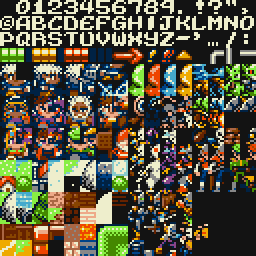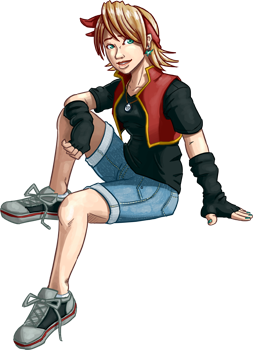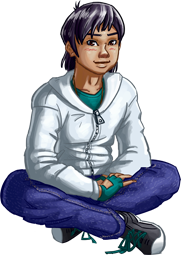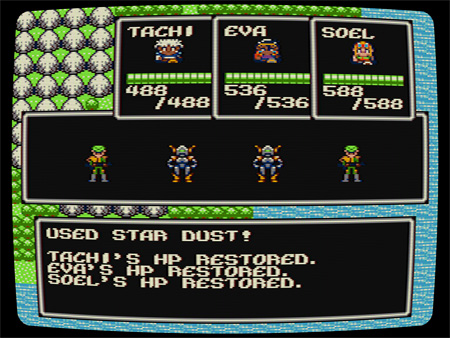When you’re releasing something on the PC—whether the target system is Windows, Linux, Mac, or something else entirely—you’re never quite done with it, even when though the game is already out and everyone can play it. Thanks to the fact that each computer is so different from the next, and the sheer amount of players you have to find them, there’s bound to be a bug or five hundred somewhere. Annoyingly, they can often be quite serious, causing a game that someone has paid good money for to crash and prevent them from playing at all.
Because of that, I’m committed one hundred percent to maintaining Another Star after its release. If there’s a problem with the game, I’ll try my best to fix it (within reason). And not just at release, mind you. For at least the next five years, whatever happens to Vision Riders, whether the company sinks or swims after the game comes out, I’ll personally continue to put out update patches to make sure that what you paid for actually runs. It doesn’t mean as much coming from an indie developer, perhaps, but this commitment is something I take seriously. If I was big on marketing I’d call this the “Five Year Guarantee” and make a cool logo for it, but that’s just too much work I don’t feel like doing today silly.
And speaking of after release, a few people have either suggested that I look into getting the game translated into other languages, or have even offered to help do so themselves. I would absolutely love this, because I want the game to reach as many people as possible who want to play it. The game’s underlying engine is even set up to just start plugging translated dialog in with the change of a simple text file.
But, well, there’s a problem with translating this game. Can you spot it below?

A slightly dated version of Another Star’s 256 tile sheet.
Every single sprite in the game comes from this image.
Did you see it?
The problem is very simple: because I’ve limited myself to only 256 tiles, there’s only a set number of characters that can fit into the game. Notice how the game only includes capital letters, saving 26 tiles that would have been used for lower-case letter and can now be used for other graphics. Most other languages, even those that use the Latin alphabet, have a number of additional symbols (like accents) that standard English does not contain. Sure, you can use different tile sheets for different languages, trading out characters that the target language does not need, but a lot of languages are going to need more than just the 26 tiles used for the English alphabet.
Ironically, the solution to this is equally simple. Simply “cheat” the 256 tile limit for non-English languages and enlarge the tile sheet to include new characters. (For languages like Japanese, even if you’re only using hiragana this would be an absolute necessity.) Problem solved.
But wait! If we’re going to cheat and expand the tile sheet anyway, leaving all that extra real estate for tiles, why not put some of those new tiles to use? What if there was a “special edition” or “rerelease” of our imaginary Another Star game cartridge that included extra memory for foreign releases, and used some of that extra memory for new enemy graphics, new map areas to explore, and countless new things to do and see that weren’t in the original release?
In other words, post-release DLC. It’s something I’ve considered for a long time, and even have some ideas on what to include. If I went this route, I’d like to keep the DLC packs small and free of charge. In other words, if you buy the game, any of these updates will be included in the price. I’ll probably even include some sort of switch so you can stick with the “pure” 256 tile release version if you want.
Granted, the free DLC would (probably) not include something like a complete enemy graphic overhaul to make the enemy sprites bigger and more varied, or an HD graphic pack with higher resolution and more colors. While those things would be cool, they’d likely take months of work to complete and it would be difficult for me to justify handing them out for free, supposing I’m able to do them at all. Still, it’s something to keep in mind.
Regardless, I hope this gives you something to look forward to. I want to make sure the money you pay to play the game feels like money well spent! Another Star is nearing release as we speak, so you’ll be able to get your hands on it before long.



